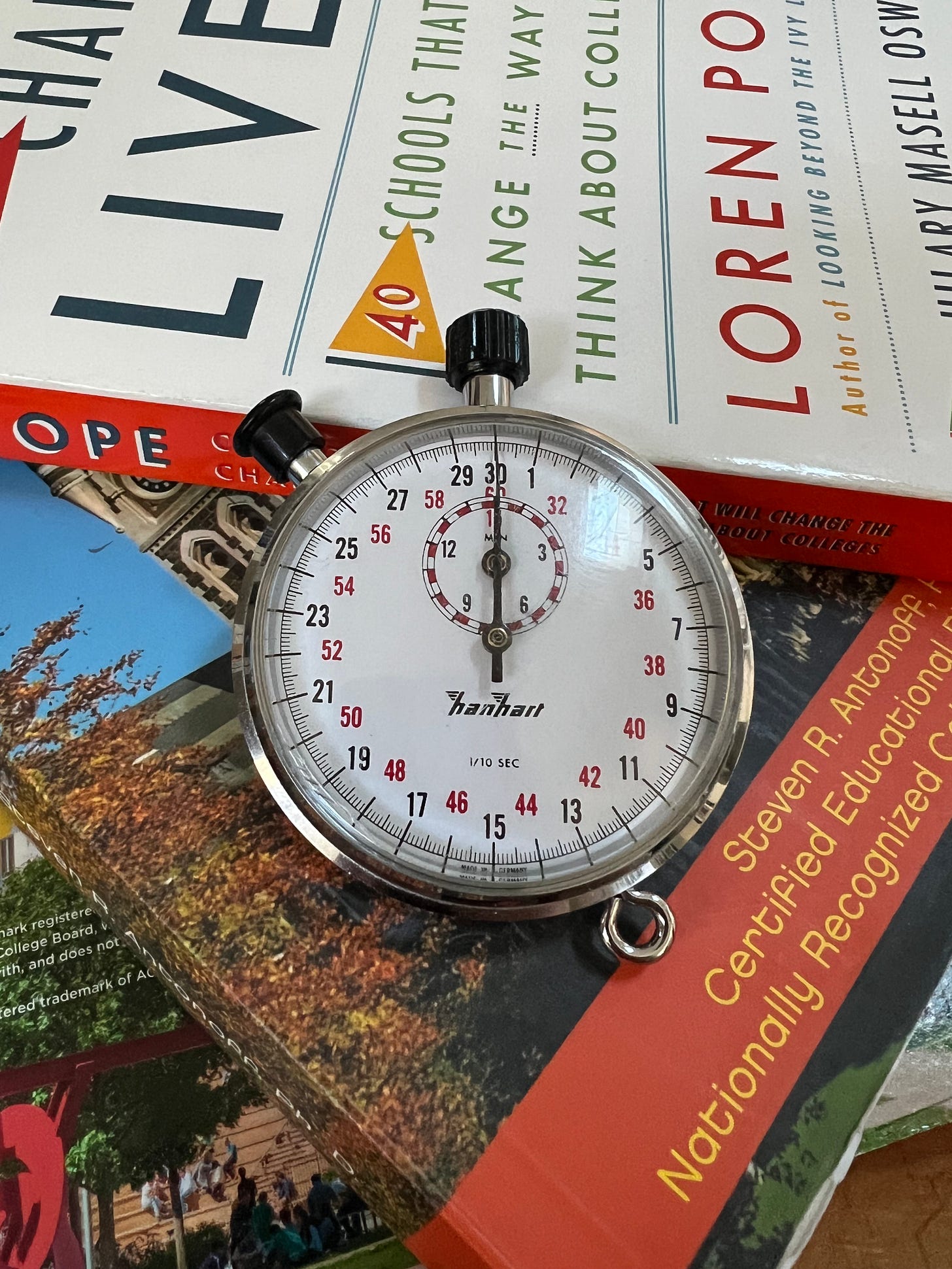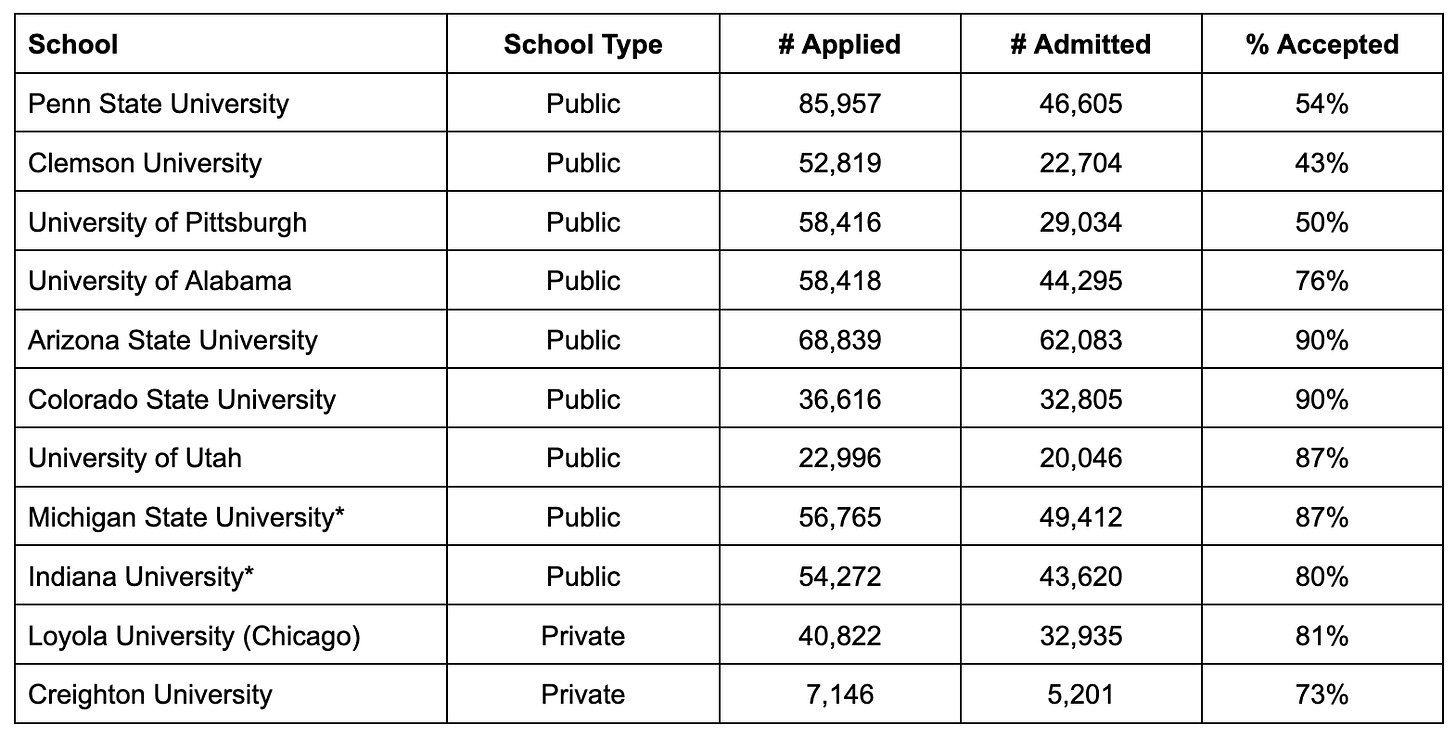Rolling Admissions - What This Really Means
Understand how rolling admissions work and how to make the most of this flexible college application option.
Momentum is a powerful concept, not just because objects in motion tend to stay in motion, but also due to its psychological impact. A positive experience can create a feedback loop, where one 'win' leads to another.
The college admissions timeline is typically driven by deadlines. You build momentum pushing towards a specific date to submit all required materials. Then you wait, often for months, and by the time you receive a decision, your momentum may have waned.
Rolling admissions offer a more instantaneous process, operating on a first-come, first-served basis, which helps you generate and maintain momentum.
What is Rolling Admissions?
Rolling admissions allows students to submit their applications at any time within a broad window, often spanning several months of fall and spring of senior year. Colleges review applications as they receive them and notify students of their decisions within weeks.
Comparison to Traditional Admissions:
Fixed Deadlines vs. Open Window: Traditional admissions have set deadlines (e.g., November 1 for Early Decision, January 1 for Regular Decision), whereas rolling admissions offer a more extended and flexible window.
Batch vs. Continuous Review: Traditional admissions review applications in batches after the deadline, while rolling admissions review them continuously as they come in.
Notification Timeline: Traditional admissions notify students en masse by a specific date, while rolling admissions provide continuous and expedited notifications.
Benefits of Rolling Admissions:
Extended Application Period: The longer window reduces the pressure surrounding a single deadline.
Quick Decisions: Students receive decisions within weeks, allowing them to make plans sooner.
Flexible Timeline: Students can apply later, often into February or March, giving them time to improve their applications (e.g., retaking tests, improving grades, strengthening extracurriculars).
Caveats:
Apply Early: Since decisions are made as applications are received, applying early can increase acceptance chances as spots are still available.
Priority Deadlines: Schools may have priority deadlines for scholarships and financial aid, occurring well before the rolling admissions window closes.
Competitive Applications: Students still need to submit competitive applications. Rolling admissions adjusts the timetable but does not relax admissions requirements.
11 Amazing Colleges and Universities That Offer Rolling Admissions
In 2024, the following schools offer rolling admissions:
*hybrid - mixes traditional with a rolling admissions process following the regular decision deadline
You might be asking - why don’t more colleges offer rolling admissions?
The short answer is that the traditional admissions process offers benefits to colleges that help them manage their resources (batch processing is more efficient), predict enrollment, and maintain a competitive admissions landscape (evaluating all candidates as a group allows colleges to be more selective with who they admit).
The longer, and more nuanced, answer is that there’s a stigma associated with rolling admissions. To some, rolling admissions is a strategy a college chooses to pursue only if it is having difficulty filling a class, meaning having difficulty attracting and admitting enough high quality applicants. By creating an extended window for admissions, the thinking goes, an institution can attract more candidates. And, as such, the notion of rolling admissions has come to be a proxy for a less rigorous or prestigious academic institution who needs help filling their freshman class.
This stigma is both unfair and untrue as the list above demonstrates. There are amazing colleges and universities that offer rolling admissions and provide a rigorous academic environment and attract some of the brightest and best talent.
Don’t overlook colleges that offer rolling admissions.
Strategies For Using Rolling Admissions
Here are three ways you can maximize the benefits of rolling admissions:
1. Get An Early “Yes” Decision
How it works: Applications via the Common App open in August. Gather the necessary information and, as soon as you are ready, submit your application to a school (or set of schools) that use rolling admissions. You’ll hear back within weeks. You are applying to a rolling admissions school before applying to any other schools, including early decision / early action schools.
Who it’s for: Students with a strong academic profile going into senior year, and who have completed (or can quickly complete) the necessary application materials (including test scores, essays, recommendations).
Benefit: Momentum—a “yes” feels very good and validates your accomplishments and hard work. Receiving a more immediate answer is a pressure release valve, potentially opening up other opportunities for admissions strategies. With an offer in hand that you like, you can approach the rest of the college application season differently.
2. Give Yourself More Time To Improve Your Application
How it works: The regular decision application deadlines for many colleges and universities are in early January. However, colleges with rolling admissions often have application windows that extend into March, April, and sometimes even into the summer after your senior year. Apply when your application is ready.
Who it’s for: Students who need more time to improve their application - retake standardized tests, strengthen extracurriculars, improve their grades, and include first half senior year marks on their transcript.
Benefit: Having a longer period to apply reduces the pressure associated with traditional application deadlines.
3. Backup Plan (aka Break Glass in Emergency)
How it works: Create a plan and apply to schools via early admissions strategies and/or regular decision deadlines. If your plan doesn’t work out as expected (no judgment—some things in life you control, some things you don’t), leverage the later application window of rolling admissions schools to find a better-fit college.
Who it’s for: Students applying to schools with more competitive and/or fixed deadlines who later learn they need more options.
Benefit: Even when life throws you lemons, there are great colleges that accept applications well past January of senior year. Just remember that because rolling admissions is first come, first served, not every door will still be open, but there will likely be some great options.



